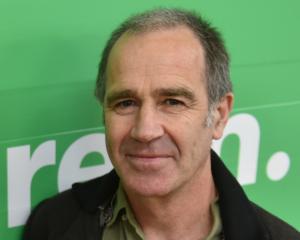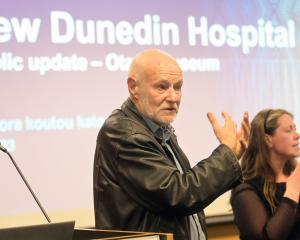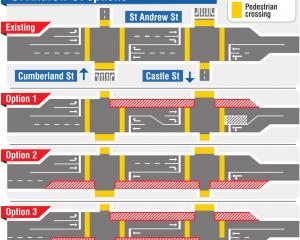Yesterday, as the Southern District Health Board was about to launch into a new topic eight minutes after its next meeting was meant to have begun, its chairman Pete Hodgson suggested that the board’s time might be better managed.
While acknowledging that staff put considerable time and effort into preparing extensive presentations for the board, Mr Hodgson noted that running through that material could be time-consuming.
The agenda for yesterday’s meeting was 275 pages long and considerable portions of it — including most of chief executive Chris Fleming’s report to the board, which contains an overview of the most significant issues which face the organisation — were not dealt with in the public section of the meeting.
Mr Hodgson is quite right to question whether the board’s time is being used effectively.
However, to use public service parlance, there is more than one stakeholder involved with this.
The public, through the eyes of the media representatives who were at yesterday’s meeting, are also entitled to know what the health board they elected and which looks after their wellbeing is up to.
This is absolutely not to suggest that Mr Hodgson was trying to hide anything — since the return to an elected board the SDHB has, to its credit, made much more material public than it ever used to.
But there were topics in Mr Fleming’s report, such as radiology services, elective surgery and the state of emergency departments which are issues the public are vitally interested in, and which did not deserve to be rushed past.
Comments
I don't understand this:
Mr. Fleming is the Chief Executive Officer. As the Board’s sole employee, his job is to execute upon the Board's directives and to report back effectively on the progress and outcomes of these executions. All other members of the executive branch report to him.
Mr Hodson is the Charman of the Board. His job is to set the Board’s agenda, and to ensure that the information that is necessary for the Board to effectively consider the items on the agenda are delivered to the Board in an appropriate format, and in a timely manner.
In a well-functioning board the chair of the board and the CEO work together to set the agenda and to develop an efficient set of supporting information. However, the chair ALONE decides upon what is presented to the board and how the board’s meetings are conducted.
In a malfunctioning board a process called ‘snowstorming‘ may occur, where a board is blinded by a blizzard of verbose, and irrelevant executive material. This will prevent it from effectively fulfilling its governance role.
A snowstorm appears to be in progress at the DHB. It is Mr. Hodgson’s SOLE prerogative and responsibility to put a stop to it.
A 275-page agenda ... so help me.
Who has time to read and comprehend a 275-page agenda?
Any agenda longer than 20 pages shows a total failure to comprehend the role of the DHB ... governance and strategic direction. Big questions and keeping the executive in check.
Why is the ICU expansion scheduled to be 2.5 years behind plans (with no guarantee of delivery in the deep future)?
Has the urology fiasco been fixed?
If not, then why not?
A 275-page agenda screams 'snow job' to me, and a desperate need to savagely prune the executive arm, for the current team are clearly unable to distil and prioritise the business to hand.
Like a.lot of people, I lost faith in the legitimacy of the board when Cull was appointed. Another group of people who get paid a lot of money to be totally clueless!












